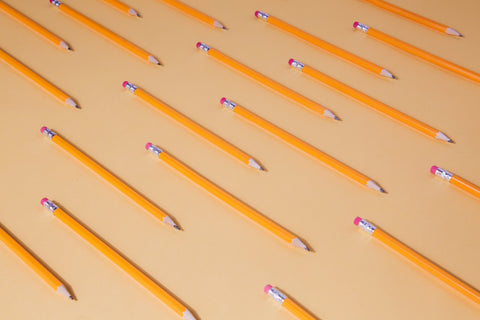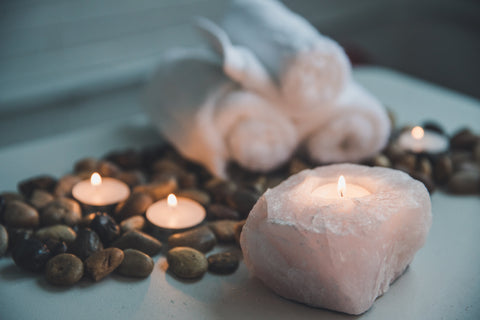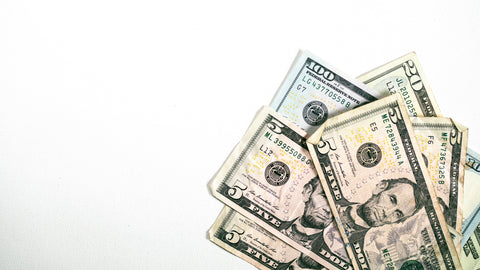The humble pencil has been around for nearly six hundred years and is still the writing instrument of choice for many writers and students. Even though we’re well into the digital age and have become dependent on all things connected to the Internet, the classic pencil doesn’t require recharging, or batteries; only the occasional sharpening to keep it going. Though if you prefer mechanical pencils, they only require to be refilled every once in a while.
But while some people prefer to type up their notes on their phones, or send text messages versus hand written letters in the mail, the reliable pencil lives on, with over a billion pencils made in the U.S. annually alone.
Still, the people prefer the old fashioned way of writing, know very little about the writing instrument they take for granted. From why the #2 appears on every pencil, to how a special pencil inspired a character in the James Bond series, here are 20 facts you probably didn’t know about pencils.
1. Pencils Aren’t Filled with Lead (Seriously, Stop Saying That)
No, you’re not going to get lead poisoning if you get poked with a pencil because there is no lead in your everyday pencil. The dark substance in a pencil is graphite, which has been used inside pencils since they were invented.
2. One Tree Makes a Hill of Pencils
The average tree can create around 170,000 pencils. The most common tree used for pencils are cedar trees.
3. The #2 on Your Pencil Denotes the Darkness of the graphite used (not lead)
Once again, there is no lead in your pencils. As proof, the most commonly used type of graphite for writing is #2, using the HB hardness scale. Only American pencils use #2 on their pencils and there is no standard of measurement for graphite hardness or color.
4. Graphite (NOT LEAD) Comes from Greek
Graphite comes from the Greek word “graphine,” which literally means “to write.”
5. Pencils Can Be Used Almost Everywhere
Even though it’s made from wood, graphite, and clay, the pencil can be used underwater, in space, and upside down. In case you’re ever SCUBA diving and feel like writing a novel, take a pencil with you.
6. Pencils were the Preferred Writing Tool of Famous Writers
Both Ernest Hemingway and John Steinbeck used pencils to write their famous novels.
7. Pencils Will Last You Far Longer than Any Ballpoint Pen
It’s an unproven theory that a single pencil can draw a line about 35 miles long. This theory has yet to be validated.
8. There’s a Reason Hemingway and Steinbeck Used Pencils
For those who don’t measure the longevity of a pencil in miles, the average pencil can write around 45,000 words. This is the same length as a short novel.
9. Pencils have Their Own Holiday
People around the world celebrate their love of pencils on March 30th, considered World Pencil Day.
10. The Yellow Pencil and the China Connection
In the early days of pencil production, the best graphite in the world came from China. When American manufacturers wanted to indicate their pencils were made with Chinese graphite, companies began painting their pencils yellow, the color of royalty and respect associated with China.
11. It Took a Long Time for the Pencil Sharpener to Be Invented
Bernard Lassimone invented the pencil sharpener in 1828. But before the pencil sharpener….
12. The First Pencil Sharpener was a Knife
Sharpening a pencil was dangerous business before the first real pencil sharpener was invented. Cutting yourself while sharpening your pencil was a common reality of life.
13. Thank John Dixon if You Love Pencils
John Dixon, of the famous Dixon Pencils, created a machine that allowed him to mass produce wooden shapes that would easily accept graphite cores, creating pencils much faster.
14. The First Pencils Never Stayed Put!
Originally, pencils were rounded. Of course, this caused pencils to roll whenever they were placed on a surface, making it an annoying problem for anyone trying to use one.
15. The World Makes a Lot of Pencils
On average, 15 billion pencils are produced in the world annually. Laid end to end, they would circle the world 62 times.
16. Not All Pencils are Made of Wood
Mechanical pencils, as they’re called in the US, are called propelling pencils in the UK and pen pencils in India.
17. And Not All Pencils Let You Make Mistakes
While American pencils traditionally feature rubber erasers on their heads, European pencils don’t have erasers. Maybe they’re still using bread to rub away their mistakes?
18. There is NO LEAD in Mechanical Pencils Either
Even though mechanical pencils are sold with “lead” refills, lead refers to the core and not the material. The cores are made from graphite, the same material used in regular pencils.
19. Pencils Helped POWs During World War II
In Cumbria, where the largest deposits of graphite was discovered, a pencil factory began creating special pencils to help prisoners of war escape from their camps. The pencils contained a compass in the eraser head to help them find their way. The pencils were nicknamed “spy pencils.”
20. Spy Pencils Inspired a Character in a Famous Spy Series
The spy pencil is said to have been a source of inspiration for Ian Fleming, the creator of James Bond. The famous gadget inventor called “Q” is thought to have been inspired by spy pencils.




Comments (0)
There are no comments for this article. Be the first one to leave a message!